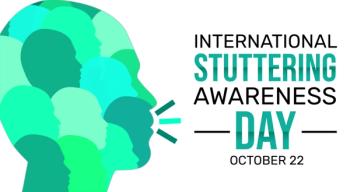
Bringing Awareness to Brain Injury Awareness Month
To help bring attention to what can be a preventable disability, and to focus on ways to support patients with brain injury, March is commemorated as Brain Injury Awareness Month.
CLINICAL COVERSATIONS
According to the
Psychiatric TimesTM invited Matthew J. Ashley, MD, JD, to discuss some of the overlap between brain injuries and psychiatric symptomology and illness.
Psychiatric TimesTM: What should psychiatrists be aware of to better help their patients prevent brain injury?
Matthew J. Ashley, MD, JD: Preventing
The most common cause of TBI isn’t car accidents, believe it or not, but falls. So if your patient works in an industrial job where there is a risk of an on-the-job injury, remind them to follow safety protocols.
Similarly, remind patients to wear a seatbelt. And, if you ride anything with two wheels—not just a motorcycle but also a bicycle—then please wear a helmet and operate the vehicle defensively.
PT: Much attention has been paid to brain injuries as a result of accidents and sports, what are some other common causes of brain injuries? How do the causes of brain injury impact treatment and prognosis?
Ashley: The most common cause overall is falling, and even a ground-level falls, if suffered in the right way, can cause a significant brain injury. Other high-risk activities might seem obvious once we consider the nature of the activities, but it might not seem so obvious otherwise. This would include equestrian activities, downhill activities, skateboarding, and the like. Essentially, anything where someone is operating at a height above ground or accelerating themselves through space rapidly.
Firearm-related incidents, whether accidental or intentional and related to assault or suicide, are another common cause.
Lastly, although it doesn’t cause traumatic brain injury, another common and often preventable cause of brain injury is anoxic injury, which can be due to many causes, including cardiac arrest or respiratory arrest. Both are, unfortunately, all too common as a consequence of drug overdose. The cause of the injury can definitely have an impact on a patient’s prognosis. That is a complicated discussion, and every patient is, of course, unique.
PT: We are still learning about
Ashley: As I mentioned, respiratory or cardiac arrest can result in anoxic brain injury. COVID-19 also has an association with ischemic stroke, which is another form of brain injury altogether.
We are still learning the other more direct consequences of COVID-19 on the brain, but many effects have been reported, ranging from anosmia (ie, lack of smell), cognitive impairments (which has sometimes been colloquially referred to as brain fog), to more severe forms of encephalitis that occur later on in the course of disease as what is presumably an autoimmune consequence.
In addition, there is post-ICU syndrome, including the traumatic experience of critical illness, the social isolation, and any other form of critical illness myopathy or neuropathy that patients might experience after a long ICU course.
PT: With the attention in the popular press around TBIs, have we seen a decrease in their prevalence?
Ashley: This is hard to determine. With increased awareness of TBI, it is possible that we have increased our detection of milder cases, which would result in seemingly higher prevalence numbers. Conversely, with awareness and improved adherence to safety measures such as seatbelts, helmets, and concussion protocols, we probably reduce the actual number of cases that are occurring, but it is pretty difficult to understand all of that entirely.
PT: Does treatment for brain injury differ for patients with serious mental illness?
Ashley: Obviously, there are some differences, in the sense that we have to concomitantly treat both the underlying mental health disorder along with the brain injury, but the fundamentals of treatment for brain injury don’t change all that much. And, perhaps I have a bias, but I believe that the comprehensive, cognitive, behavioral, medical, and therapeutic treatment paradigm that we use to treat traumatic brain injury likely has other, coincidental benefits for individuals with other mental health disorders as well.
PT: Anything else you want psychiatrists to know about brain injury?
Ashley: I would say that every psychiatrist should know that there is help out there for TBI survivors, that comprehensive and dedicated programs exist, and they can be beneficial even long after the initial injury.
Dr Ashley is the chief medical officer for Centre for Neuro Skills, which operates postacute brain injury rehabilitation programs. He also serves as visiting assistant clinical professor in the department of neurology at the University of California, Los Angeles.
Newsletter
Receive trusted psychiatric news, expert analysis, and clinical insights — subscribe today to support your practice and your patients.













